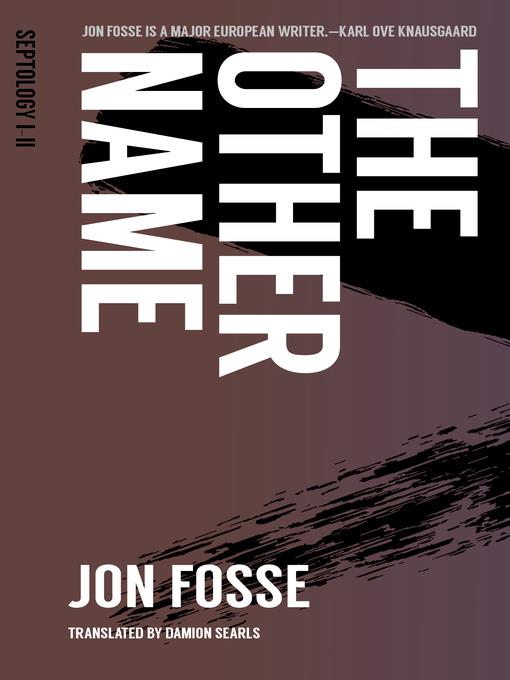
The Other Name
Septology I-II
کتاب های مرتبط
- اطلاعات
- نقد و بررسی
- دیدگاه کاربران
نقد و بررسی

February 1, 2020
The first two sections of Norwegian novelist Fosse's (Morning and Evening, 2015, etc.) 1,250-page "septology" on life in a disaffecting world. Fosse is often mentioned as a leading contender for the Nobel Prize in literature. The present book has a fittingly Joycean sweep, opening in medias res with "And," that establishes him as a contender. Asle is a painter who lives in the small coastal village of Dylgja. He is widowed and lonely, and painting doesn't bring him much pleasure: "I think, it's time to put it away, I don't want to stand here at the easel any more, I don't want to look at it any more, I think and I think today's Monday and I think I have to put this picture away with the other ones I'm working on but am not done with...." So Asle thinks, one onrushing thought spilling into and fueling another one, in a narrative that is almost unbroken except for occasional bits of dialogue. "When I paint it's always as if I'm trying to paint away the pictures stuck inside me," Asle reveals. But which Asle? There's another one of him up the coast in the small city of Bjørgvin, where a gallery exhibits the work of the first Asle. The second is a true doppelgänger save that his life choices were different: He took the roads that the first Asle did not only to wind up in much the same place. Shivering, seemingly moribund, the second Asle is an object of pity and concern for the first, who steals glimpses of him from time to time. Along the way, Fosse, who shifts between first- and third-person narration, meditates on religion (especially Catholicism, a minority religion in Norway), art, the nature of life, and other weighty topics: "to tell the truth there's not much that makes me happy any more," the first Asle reveals, and we believe him. It's a challenging read but an uncommonly rich one. Transit Books will publish the final two volumes of the book in 2021 and 2022. A literary experiment that invites comparison to the modernists of a century ago, poetic and charged with meaning.
COPYRIGHT(2020) Kirkus Reviews, ALL RIGHTS RESERVED.

Starred review from February 17, 2020
The first two installments of Fosse’s wondrous septology (after Morning and Evening) sustain a riveting stream of consciousness in a single rhythmic sentence. A graying painter named Asle drives back and forth from the remote Norwegian seaside town of Dylgja to Bjørgvin, where a gallery shows his work. As he begins to drive out of Bjørgvin, he worries about another painter, also named Asle, whom he regrets not visiting there. He stops the car and walks through a snowy playground; observing a couple, he darkly desires to “paint them away” so that the “picture will disappear... and the uneasiness inside me will stop.” Along with worry and unease, Asle is haunted by memories of the childhood deaths of a neighbor boy and Asle’s sister. While he wanders in the snow, a woman recognizes him and invites him back to her house; he claims not to know her, and readers will understand she has mistaken him for the other Asle. Fosse’s recursive narrative has echoes of such literary contemporaries as Ben Lerner and Karl Ove Knausgaard, while his deep focus on minutiae calls to mind Nathalie Sarraute. Fosse’s portrait of intersecting lives is that rare metaphysical novel that readers will find compulsively readable.

























دیدگاه کاربران